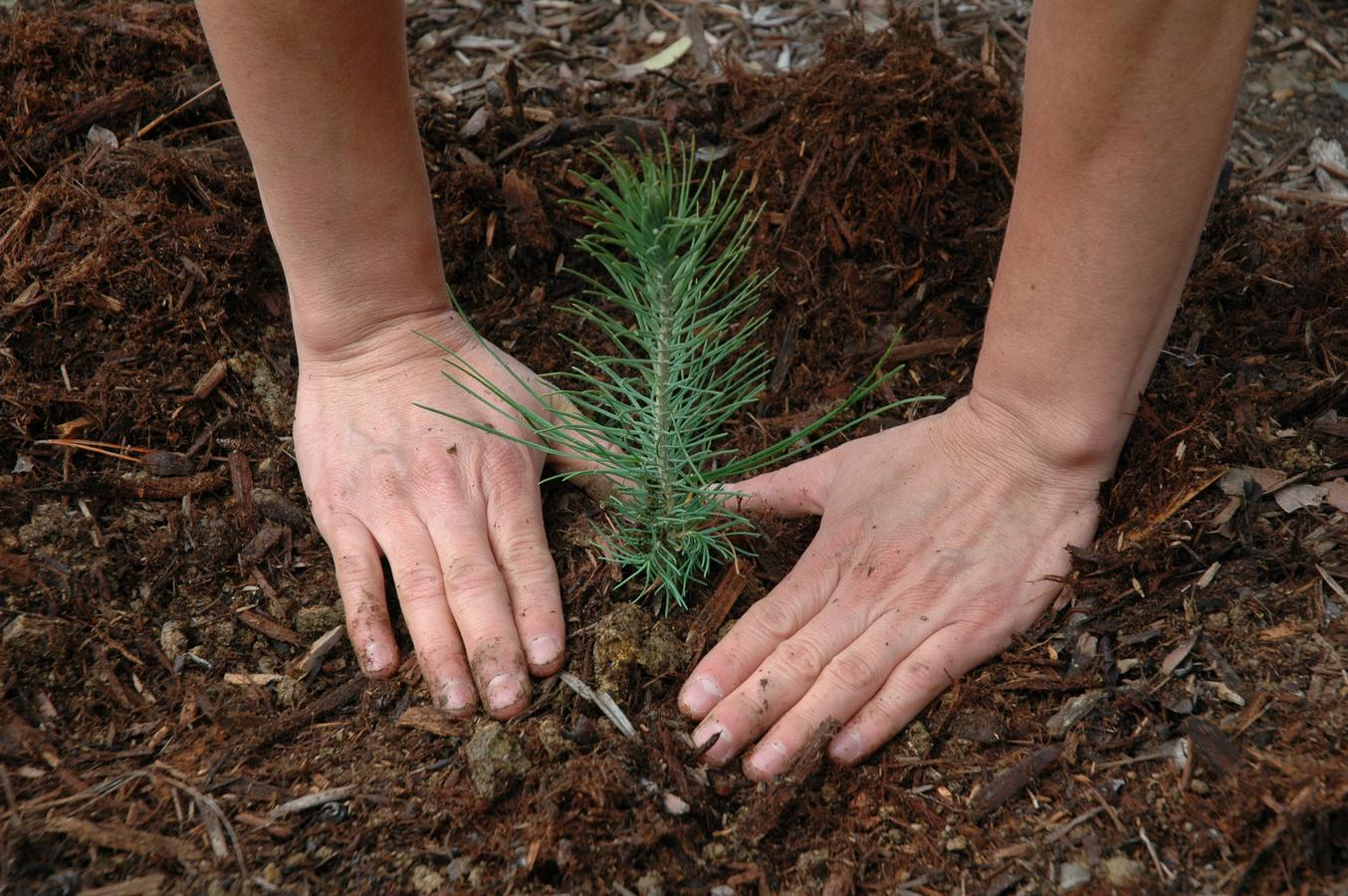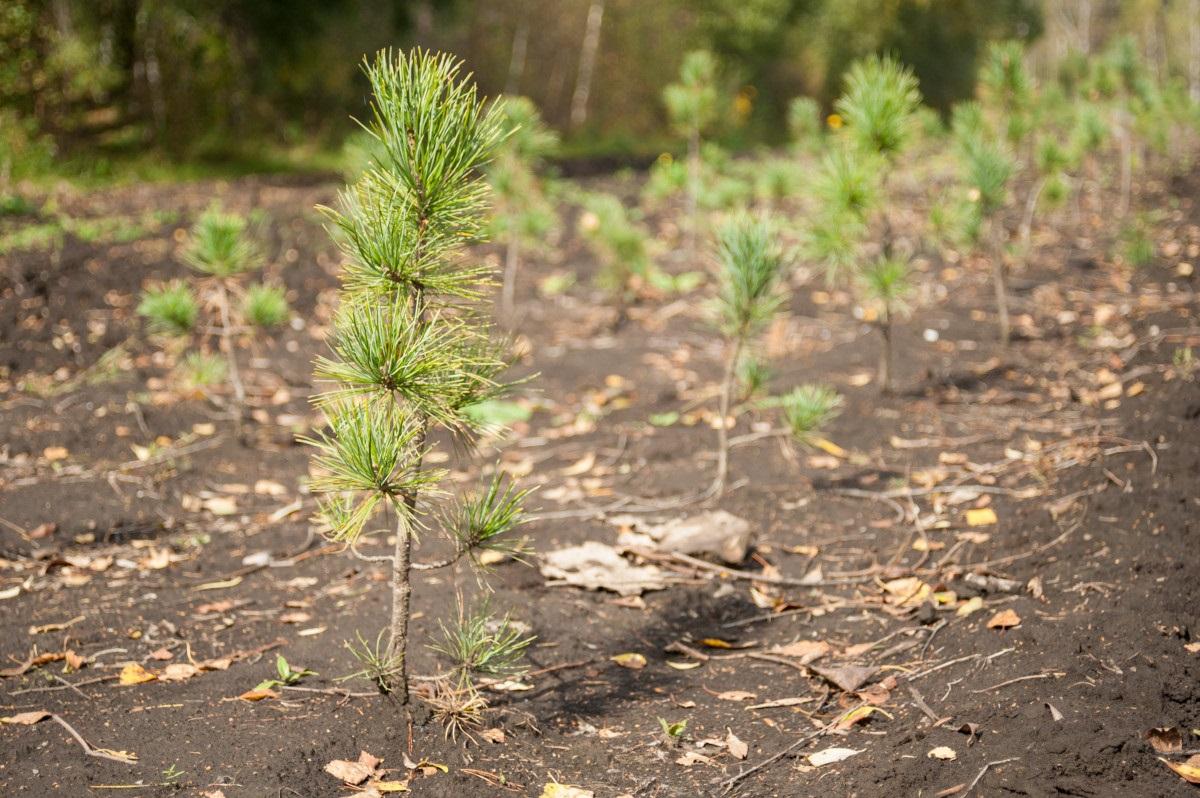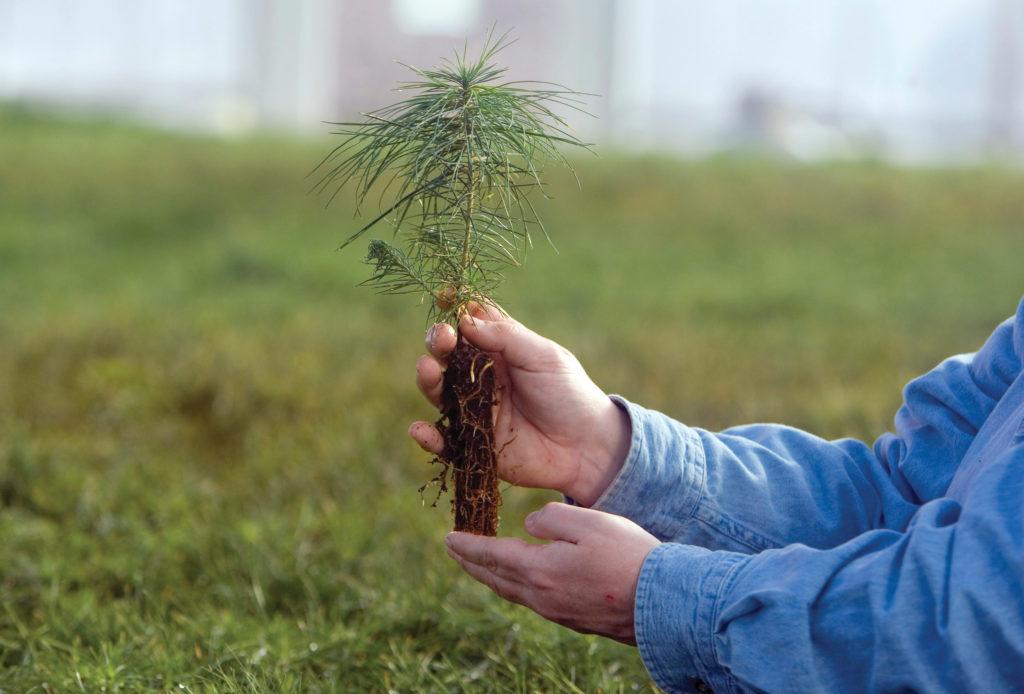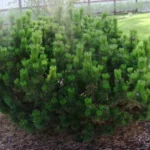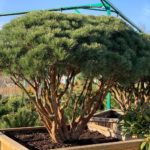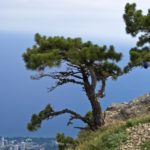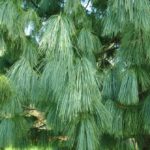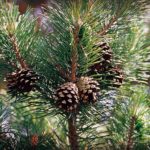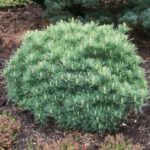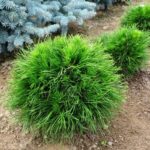Pine is an evergreen tree that is often grown in summer cottages. This plant is used to decorate gardens, making it part of landscape compositions. Pines perfectly purify the air, filling it with biological substances valuable to people. However, not every novice gardener knows how to plant a pine tree. In order for the plant to adapt to new conditions, it is important to follow a number of rules.
Which variety to choose
Currently, nurseries offer gardeners many different types of pine trees for planting. Plants differ in the color of the needles, the length of the needles and the height of the tree. They can have a rich green or golden color. The shape of the crown also varies.
There are several types of pine trees that are suitable for growing in the garden. The most popular varieties include:
- Scots pine - suitable for planting in the middle zone. The tree can reach a height of 50 meters. This species is resistant to frost and is not too demanding on the composition of the soil. It is characterized by small cones and long needles.
- Weymouth pine is a fairly large plant, the height of which exceeds 30 meters. The crop can be planted in the south. It can withstand temperatures down to -20 degrees. The plant develops normally in poor soil, but it is best to plant it in a sufficiently moist, drained substrate. Young trees need to be systematically moistened.
- Siberian cedar pine - this tree grows up to 35-45 meters. Its lifespan exceeds 500 years. The plant is characterized by a fairly dense crown with many peaks. This variety is distinguished by short needles and large ovoid-shaped cones. Under natural conditions, the culture is found in large areas - from the Urals to Siberia. The variety is resistant to frost and is perfectly adapted to harsh climatic conditions.
- Rumelian pine is an evergreen coniferous crop, which is distinguished by a cone-shaped crown. The tree is widespread in the mountainous regions of Europe. It is often used to decorate park areas. This variety requires a fairly warm climate.
- Dwarf pine - has a compact size that allows the tree to be actively used in landscape design. In appearance, the plant resembles a dense bush, which has a spherical shape. This variety is characterized by dark green needles and single cones.
The right time to plant
It is recommended to plant conifers in early spring or autumn. They do best during these times of year. If you place a seedling in the ground before frost, it will not have time to adapt to new conditions, which will lead to the death of the tree with the onset of cold weather. Sometimes seedlings are moved into the ground during the dormant period, which occurs in winter. However, in this case it is necessary to use special equipment.
Landing instructions
Most pines are very frost-resistant plants. They develop in conditions of low humidity and are characterized by resistance to all kinds of pollution. For proper planting of crops, it is important to give preference to a site without stagnant rainwater.
How to choose a seedling
First you need to choose the right planting material. Pine seedlings are sold in specialized nurseries. To get a high-quality culture, it is important to consider a number of rules.
Planting material must have closed roots. Such plants are sold in containers. The advantage of such seedlings is considered to be well-developed roots and a solid earthen ball. In addition, the rhizomes of such plants contain valuable microorganisms that are useful for the subsequent development of the tree.
It is not recommended to purchase seedlings with roots wrapped in film.This material does not contain beneficial bacteria, as they die in the open air within 20 minutes. For the same reason, it is important to quickly transfer the seedling from the container to the soil. Pine trees with an open root system can also be planted in the soil. However, they take root much worse.
When purchasing planting material, it is not necessary to opt for very large seedlings. They are quite expensive, but have problems with survival. It is best to buy plants that are 4-5 years old.
Can seeds be used?
To grow pine trees in your country house, you can use seeds. This requires collecting ripening green cones. After this, it is recommended to dry them near a heat source.
After collecting the cones, you need to remove the seeds from them. In nurseries, this process is carried out in special separators. At home, it is enough to spread the cones in a dry and warm place and cover with paper. After some time, the seeds will begin to fall out.
To achieve more uniform shoots, a stratification procedure is carried out. To do this, you need to keep the seeds for several months in a moist substrate at a temperature of +5 degrees. Such conditions are observed in the autumn-winter period.
Seeds should be planted when they come out of the cones on their own. Fresh nuts have good germination. When collecting cones in winter, they can be immediately sown in pots or left in a dry and warm place. In the second case, planting material should be planted in open soil in the spring.
When storing seeds in a dry place, they remain viable for 2-3 years. In unfavorable conditions, nuts germinate slowly and unfriendly.
Preparing the landing site
In order for the crop to take root better, it must be treated with a root formation stimulator before planting.Then you need to start preparing the site for planting.
After choosing a location, you can begin to dig a hole. It is important that it is twice the size of the container with the seedling. A suitable option would be the shape of a truncated cone. Thanks to this, it will be possible to add nutrient substrate to the bottom or walls of the recess or place a drainage layer there.
To plant a pine tree, you need to lay out drainage at the bottom of the hole. The thickness of this layer should be 6 centimeters. For this purpose, it is permissible to use crushed brick or expanded clay. On top you need to place soil mixed with turf and sand. Also add 1 small spoon of nitroammophoska to the ground.
It is recommended to add an additional 200 grams of slaked lime to acidic soil. One part of the substrate must be poured into the recess, and the second must be left on the surface. At the time of transplanting the crop, the remaining voids must be filled with this mixture.
Step by step guide
In order for planting pine seedlings to be successful, you need to adhere to a number of rules and recommendations. First, you should choose a place for planting and determine the type of soil on the site. It is recommended to prepare the cavity several weeks before the procedure. After which you can begin planting.
To do this, you need to place the seedling in a hole and carefully spread the root system over the surface of the earthen ball. Dry and rotten roots should be removed. After planting the tree, the recess must be sprinkled with the remaining substrate. It is important to ensure that the root collar is located above the surface of the earth. Then the seedling needs to be watered with warm water. After some time, the soil will settle. Due to this, the tree will be leveled.
Shading the crop is especially important during spring planting. If this is not done, there is a risk of severe burns. When planting a pine tree in the fall, it needs to be tied up. This procedure is very important when growing crops in areas with a cool climate.
When planting several pine trees, it is important to monitor the distance between them. Large crops are recommended to be located at least 4 meters from each other. Low-growing varieties are placed at intervals of 1.5 meters.
Caring for a growing tree
Caring for pine trees is quite easy. Young trees require systematic pruning and feeding. If we talk about watering, many varieties do not need it. Pine litter helps retain moisture. The only exception is the Rumelian variety. This tree is considered to be very moisture-loving. Therefore, it needs to be watered 2-3 times per season. In this case, it is recommended to use 15-20 liters of water per plant.
Young trees need to be moistened in the fall. Wet soil practically does not freeze. In addition, this procedure helps to avoid burnout of the needles in the spring. Pines respond well to sprinkling of the crown. This procedure is recommended to be carried out every day. It is best to do this after sunset.
In the first few years after planting, the pine tree needs to be fed. To improve the development of the plant, it is recommended to add mineral preparations to the tree trunk. After 3 years, the pine will have enough organic fertilizers that accumulate in the litter.Dwarf varieties do not require fertilizing at all.
In the first year after planting, the crop must be insulated. To do this, it is recommended to make a frame and stretch the fabric on top. Trees that have a spreading crown need to be tied to pegs. Thanks to this, their shoots will not break under the weight of snow.
To retain moisture in the soil and maintain its normal temperature, mulching is required. For this, it is recommended to use humus. The thickness of the mulch layer should be 10 centimeters. In the northern regions, it is required to place spruce branches on top of the mulch. Thanks to this, the wind will not blow away the top layer.
A year after planting, formative pruning of pine seedlings is required. In this case, it is recommended to shorten or completely cut off young shoots. This helps keep the plant compact in size. Sanitary pruning should be carried out in spring. This is done if necessary.
Protecting pine from pests is of no small importance. The plant's needles can be damaged by bedbugs, pine silkworms, red pine sawflies and other parasites. When attacked by harmful insects, there is a risk of deterioration in the appearance of the needles and the condition of the tree. If the needles turn yellow, curl, or shorten, it is necessary to treat the plantings with insecticides.
Planting pine has certain features. To achieve good results in growing this crop, it is important to choose the right seedling and follow the recommendations of experienced gardeners.

